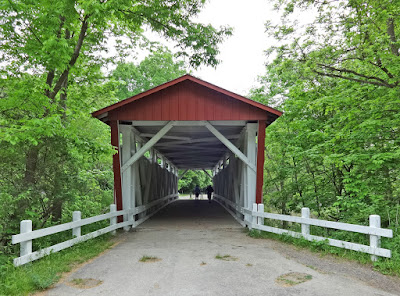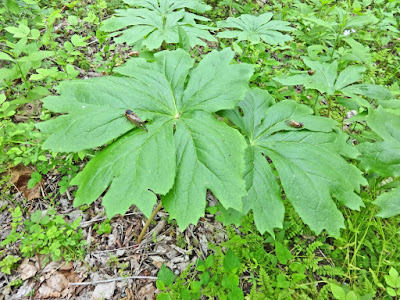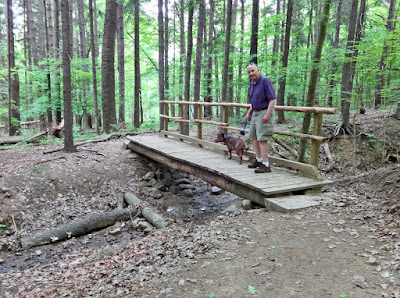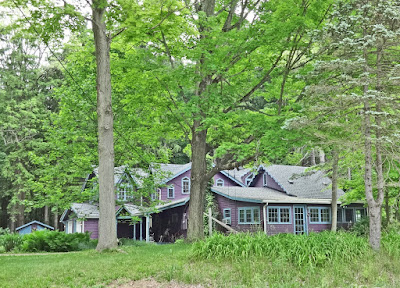Monday, May 30, 2016
Happy Memorial Day!
 |
Buckeye Trumpet Man (and Dog) (2008) by James Simon,
at the Art & Soul of Buckeye Park on Buckeye Road at E 118th Street;
also seen is Mosaic Seating (2008) by Angelica Pozo |
 |
| The Storyteller Mural (2010) by Anna Arnold |
 |
| Musical note fence at the Art & Soul of Buckeye Park |
 |
Hough Obelisk (1989) with a plaque
giving the history of the Hough neighborhood |
The area was settled by Oliver and Eliza Hough in 1799, and upon their death in 1866, the land was given to the residents of the community. At the turn of the century, Hough benefited from its proximity to "Millionaires Row" on Euclid Avenue. Between WWI and WWII, it was resettled by a mostly middle-class ethnic population. In the 1950s, there was the out-migration of the upper and middle-class whites, and in-migration of lower-income whites and blacks. Absentee landlords and an eroded tax base leading to reduced public services. The unrest came to a head in July 1966, and the resulting Hough Riots caused more people and the businesses to move out, and the area became even more neglected. New housing has been built, beginning in 1985, and in the 2000s a new shopping plaza and new schools have been built as Hough makes a comeback.
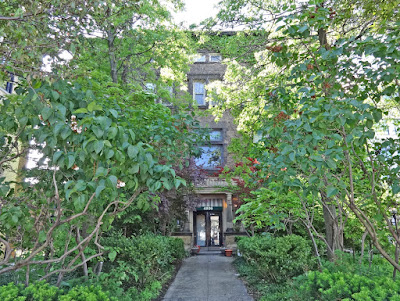 |
Esmond Building (1898, designed by John L Eisenmann)
at 4806 Euclid Avenue |
 |
The Agora Theatre & Ballroom (1913
as the Metropolitan Theatre) |
The Agora Theatre and Ballroom, which was founded in 1966 by Henry LoConti, Sr, was moved to this location in 1986.
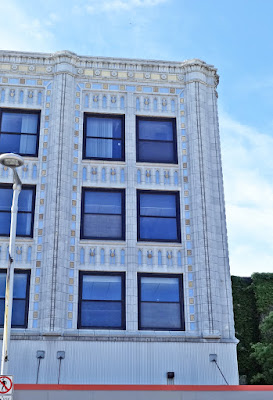 |
| The Agora detail |
 |
A station of the Euclid Avenue HealthLine (2008)
Bus Rapid Transit (BRT) route |
 |
| An articulated DE60LFA-BRT bus with a diesel-electric hybrid engine |
 |
Sarah Benedict House (1883, architect
unknown, in Queen Anne style), now the
Cleveland Restoration Society headquarters |
 |
| Unique wrought-iron fence at the Sarah Benedict House |
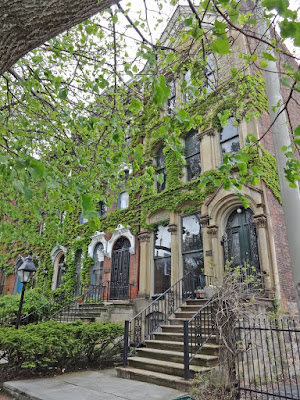 |
Prospect Avenue Row House Group,
3657 Prospect Avenue (1860) on the right |
 |
| 3655 Prospect Avenue (1860) |
 |
| 3651 Prospect Avenue (1860) |
 |
3649 Prospect Avenue (1874),
now the Brownstone Inn |
 |
| 3645 Prospect Avenue (1876) |
 |
Tavern Club (1905, by J Milton Dyer in North Renaissance style),
listed on the National Register of Historic Places in 1984 |
 |
Trinity Cathedral (1901-1907, designed by
Charles F Schweinfurth) at 2230 Euclid Avenue;
listed on the National Register of Historic Places in 1973 |
 |
Trinity Cathedral Courtyard; the cathedral was closed so
we did not see the Mather Chapel 14C altarpiece by Puccio di Simone |
 |
1361 Euclid Avenue building
in Playhouse Square with the 2014 chandelier |
 |
Ohio and State Theatres (1921,
designed by Thomas W Lamb) |
 |
Connor Palace (1922 as the Keith Palace Theatre,
designed by Rapp and Rapp of Chicago) |
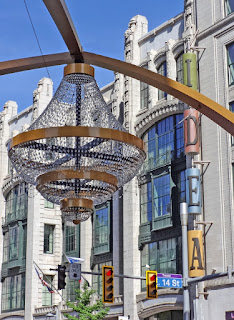 |
The Playhouse Square chandelier
and Idea Center sign for the
broadcasting and educational services
of ideastream/public radio and
Playhouse Square |
 |
There are 200 of these planters (2008, designed by
Mark L Reigelman II) meant to resemble
paper wrapped around a bouquet |
 |
| Cleveland Public Library (1925, designed by Walker & Weeks |
 |
Louis Stokes Wing of the Public Library
(1994-1998, designed by Hardy Holzman
Pfeiffer Associates) |
 |
The Leader Building (1911-1913,
designed by Charles Adams Platt)
at 526 Superior Avenue |
 |
| The Leader Building entrance |
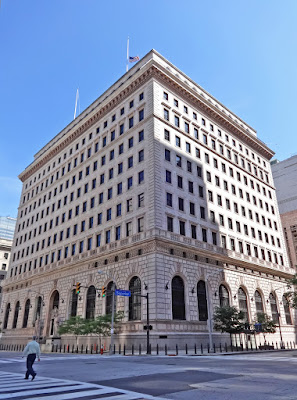 |
The Federal Reserve Bank Building (1923,
designed by Walker & Weeks) that now
has the Money Museum |
 |
The Federal Reserve Bank portal with
Integrity and Security statues by Henry Herring |
 |
Energy in Repose by Henry Herring at the Superior Avenue
entrance of the Federal Reserve Bank |
 |
The Arcade (1890, designed by John L Eisenman)
with the original Romanesque portal,
now home of the Hyatt Regency |
 |
| The Arcade's Superior Avenue entrance |
 |
| The Arcade clock and ironwork |
 |
| The Arcade interior |
 |
| The Arcade elevator lobby |
 |
| The Arcade on Euclid Avenue |
 |
The Euclid Avenue front was remodeled in
1939 by Walker & Weeks |
 |
Relief of Charles Brush, inventor of a
dynamo/electric generator for arc lights,
and contributor to the building of the Arcade |
 |
Relief of Steven Harkness,
who had the Arcade built |
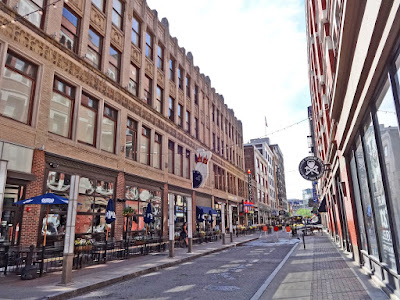 |
| E 4th Street District, a pedestrian street of restaurants |
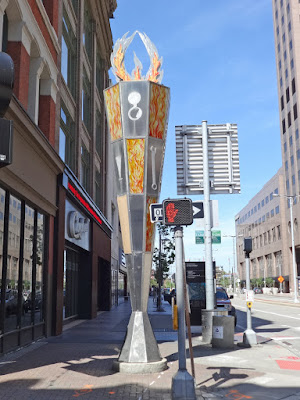 |
| Art installation on Euclid Avenue at E 4th Street |
 |
Portal (1976) by Isamu Noguchi,
in front of the Cleveland Justice Center (9/9/2016) |











































